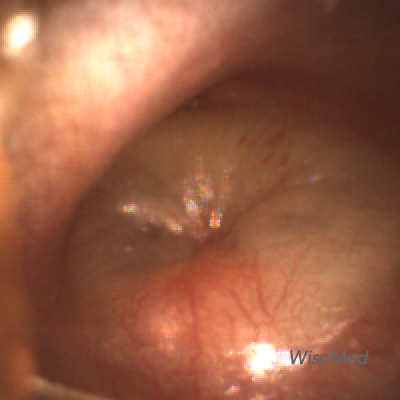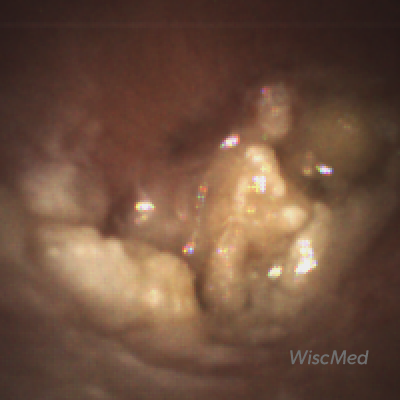
Otitis Externa
A previously healthy 13-year-old female presents to the pediatric clinic with concern about ear pain. She has been on summer break and spending time swimming in the local lake. The pain began to develop in her right ear about 2 days ago and has steadily gotten worse. She reports that hearing seems “strange” in that ear and that there has been a yellow discharge. The ear is “itchy.” She has not had any fevers or headaches. Over-the-counter analgesics have been only modestly helpful with the pain. She does not have any prior history of ear infections. This image of her ear is obtained with the Wispr digital otoscope.
What is true about this condition?
- It occurs from prolonged exposure to cold water.
- It is associated with trauma to the ear canal.
- Eustachian tube dysfunction is a risk factor.
- It’s most common in adults over 20 years of age.
The answer is 2. It is associated with trauma to the ear canal.

The patient has otitis externa, or an infection of the external ear canal. It is commonly known as “swimmer’s ear.” The eardrum is not visible due to the purulence occluding the canal. Otitis Externa is commonly seen in swimmers in the 5 – 14 year age group. It’s caused by a breakdown in the protective layers of the ear canal. Trauma such as from q-tips or ear pods or retained foreign bodies are common sources of micro-trauma that irritate the canal, remove the cerumen (wax) barrier, and allow bacteria from water sources to cause the infection. Warm summer swimming is a common part of the history of a patient with otitis externa. The infection is in the external ear canal and not associated with the middle ear, therefore the Eustachian tube is not involved. Prolonged exposure to cold water is a risk factor for exostosis, known as “surfer’s ear.”
Compare acute otitis media (infection in the middle ear space, “behind the ear drum”) to otitis externa (infection of the external ear canal, “in front of the ear drum”).
- Acute Otitis Media
- Otitis Externa
Treatment for a moderate case of otitis externa such as this one would be a topical antibiotic with a steroid. A wick is often used to assure that the medication is delivered to the entire external ear canal. Careful return instructions should be given in the case of worsening pain or fever.





























































































































































































